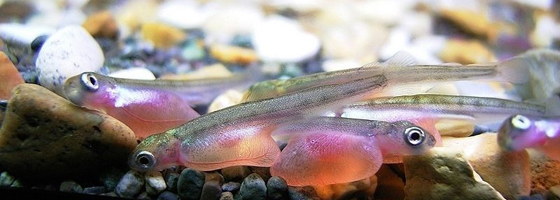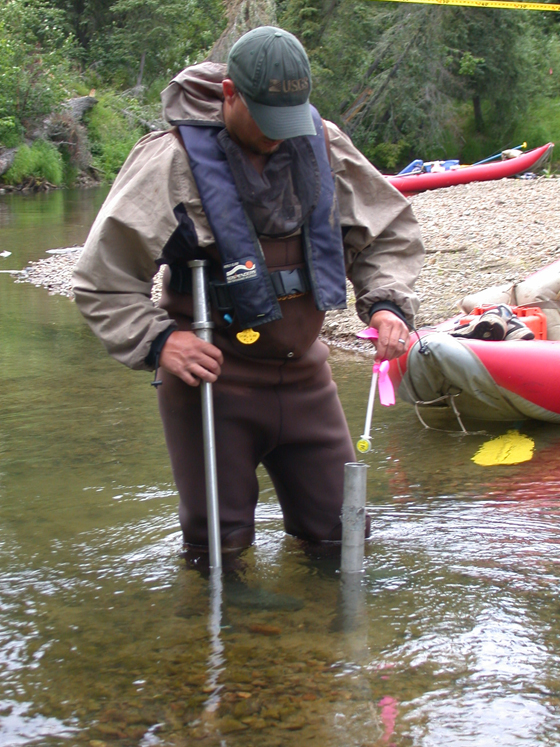Resourceful biologists monitor subsurface water temperature in Alaskan salmon streams

Data from cleverly deployed temperature data loggers in the gravel of some Alaskan rivers is helping show how salmon eggs mature in these frigid streams despite near-freezing surface water temperatures.
Chum salmon run the Tanana River in Western Alaska in November when the stream’s surface water temperatures are already hovering around freezing. Though salmon are generally understood to thrive in cold water, temperatures that low aren’t conducive to salmon egg incubation.
But the eggs aren’t floating at the surface. They’re down in the gravel, in the redds stirred up by females during the spawn. Depending on the hydrology of the system, water temperatures at that depth can be influenced by groundwater seeping up through the stream bed. Compared with the near-freezing surface water, the water flowing through the gravel can be slightly warmer–just enough to give the eggs thermal boost they need to mature and hatch in time for the spring migration back to sea.
“Temperature is a very important variable in understanding the incubation environment and development rate of salmon,” said Chris Zimmerman, a research fish biologist with the U.S. Geological Survey’s Alaska Science Center in Anchorage. “Up here, there’s water that’s subsurface, or below the gravel. It might be groundwater in some cases, or it might just be stream water that’s gone a long distance under gravel. It tends to be warmer.”
For fish biologists and management agencies that want to better understand the distribution of salmon across Alaska’s streams, it could be important to have a record of where upwelling water is opening up viable salmon habitat in streams that might seem to cold based on surface temperatures alone.

The temperature loggers are deployed by dropping them through a pipe pounded into the gravel (Credit: Jim Finn)
One way to collect the data to build that record to install temperature sensors below the gravel in study streams, but scientists working around redds have to use a fairly light touch. The shape of a salmon redd is functional, moving fresh water down into the egg pocket and carrying away waste material.
“It’s important if you’re interested in measuring something like temperature to be able to do so without altering that structure too much,” Zimmerman said.
That led Zimmerman and his colleagues develop a method for deploying small temperature data loggers under the gravel with a MacGuyver-like assembly of a zip tie, aircraft safety wire and a surveyor’s flag. The data logger is wired to a zip tie, which is cut to a length that matches the depth of the egg pocket. A brush-style plastic surveyor’s flag is attached to the other end. Driving a pipe into the gravel and dropping the unit down the pipe gets the logger down where it needs to be without disrupting the redd by digging a hole. Once the logger has collected a few months worth of data, the surveyor’s flag makes it easy to find.
“For $125, or less if you use different data loggers, we’ve got a tool that we can deploy without disturbing the gravel too much, remains in place for the entire duration that we’re interested in and is moderately easy to find when we’re done,” Zimmerman said. “It fulfilled a whole bunch of needs that we had.”
An article describing the assembly and installation of the loggers is published in the Journal of Fish and Wildlife Management.
Top image: Newborn chum salmon (Credit: OpenCage, via Wikimedia Commons)




0 comments